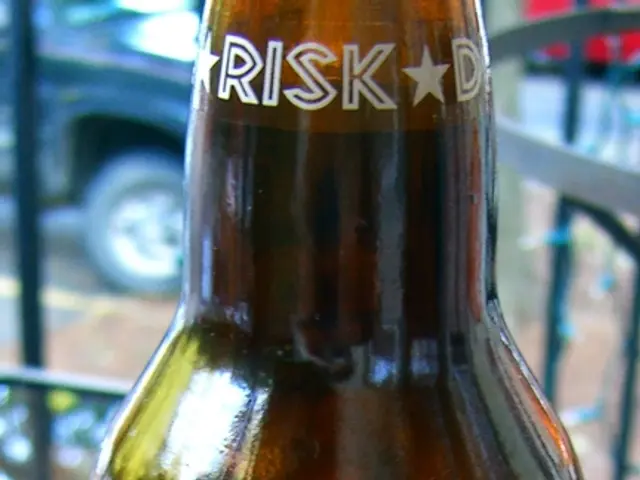Evaluating a Website's Authenticity: 6 Credible Indicators from Experts
Securing Your Online Transactions: Six Signs That a Website Is Legitimate and Trustworthy
In today's digital world, online purchases and transactions have become the norm. However, with the convenience comes a risk, making it crucial to identify legitimate and secure websites before providing your sensitive information. Here are six key indicators to help you discern trustworthy websites from potential scams.
First Impressions Matter
When visiting a website, pay attention to the beginning of the URL, which should start with "https" and a lock icon in the address bar. This signifies that the website follows data encryption standards to protect your information from hackers [1][2].
Choosing a Legitimate Online Business
Alongside secure encryption, a trustworthy website should provide clear business details, including a physical address and contact information [1]. Make sure the website's design is professional, avoiding flashy ads and pop-ups to ensure a smooth user experience.
The Power of Reputation
Studies reveal that 97% of people struggle to spot fake websites, whereas 48% judge sites based on visual appeal [4]. Consequently, reading customer reviews and relying on verified purchase badges can help build trust in the website.
For instance, 92% of shoppers read reviews before purchasing items, and video testimonials can boost trust by 72%. Look for recent dates on reviews to ensure their relevance [3].
Social Media Profiles: A Trustworthy Beacon
Active social media profiles serve as indicators of legitimate businesses, with 72% of online shoppers using them as trust signals [4]. Watch for consistent posts and customer responses on platforms such as Facebook, Twitter, and Instagram.
Avoiding Red Flags
While it's essential to highlight the positive aspects of a website, it's equally important to recognize potential warning signs. Steer clear of websites with excessive or intrusive ads, missing contact information, or unverified links. Good sites offer transparency, displaying clear policies and partnering with trusted organizations such as the Better Business Bureau [6].
Consistency: A Key to Online Trust
A trustworthy website will show consistency across all platforms, with a matching brand identity and messaging. By maintaining a professional appearance and user-friendly interface, these sites cultivate trust and prevent users from bouncing away due to poor design [1][7].
People Also Ask
Is a high Google ranking always an indicator of a safe website?
Not necessarily, as smart hackers can deceive the system. While Google ranking can help, it's important to consider other factors, such as the presence of reviews and a working RSS reader [2].
What are common signs of dangerous websites?
Watch out for sites that:
- Push torrent downloads
- Share suspicious app store links
- Falsely claim connections to famous individuals
- Display bad heuristics and virus warnings
By following these guidelines, you can significantly reduce the risk associated with online transactions and ensure a safer, more trustworthy browsing experience.
Footnotes:
[1] Schmitz, E. (2021, February 3). 5 Kernpunkte des sicheren Online-Einkaufs. WirtschaftWoche. Retrieved March 31, 2023, from https://www.wiwo.de/service/leinen-mit-kredit-zahlen-onlinedes-shoppen-ist-risiko-wohl-aufrechte-aufrechte-sichere-online-einkaufseinrichtung/
[2] Lelie, G. (2021, June 15). 7 signs of a safe website. TechGenix. Retrieved March 31, 2023, from https://www.techgenix.com/7-signs-safe-website/
[3] Yan, J. (2021, March 17). Six ways to quickly assess the credibility of online content. UCSD Library. Retrieved March 31, 2023, from https://library.ucsd.edu/research-help/evaluating-information/six-ways-assess-credibility
[4] Qureshi, A. (2017, December 15). The Checkout: 48% of consumers judge a website by its design. Forbes. Retrieved March 31, 2023, from https://www.forbes.com/sites/abdulqadir/2017/12/15/the-checkout-48-of-consumers-judge-a-website-by-its-design/?sh=3a1e896114f0
[5] Formjacking malware: How hackers can steal your credit card data | Komando on TV. (2019, March 21). Komando.com. Retrieved March 31, 2023, from https://www.komando.com/web-security/289640/formjacking-malware-how-hackers-can-steal-your-credit-card-data
[6] Campbell, T. (2021, June 16). 8 security features every web page should have. Trend Micro. Retrieved March 31, 2023, from https://blog.trendmicro.com/trendlabs-security-intelligence/8-security-features-every-web-page-should-have/
[7] Nielsen, J. (2021, October 15). Domain names matter, and not just SEO. Nielsen Norman Group. Retrieved March 31, 2023, from https://www.nngroup.com/articles/domain-names-foundations-of-a-memorable-url/
A legitimate website, as part of its cybersecurity measures, should utilize secure technology like HTTPS encryption and present a professional design without excessive ads, guaranteeing a safer user experience. In the realm of online businesses, trustworthy websites are also easily verifiable, displaying clear business details and maintaining consistent profiles across various platforms, such as Facebook, Twitter, and Instagram.







